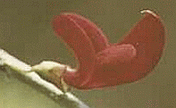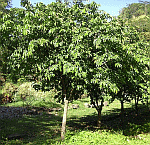
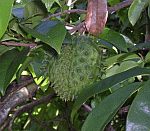
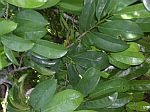
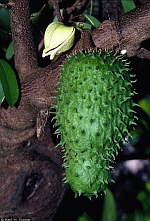
|
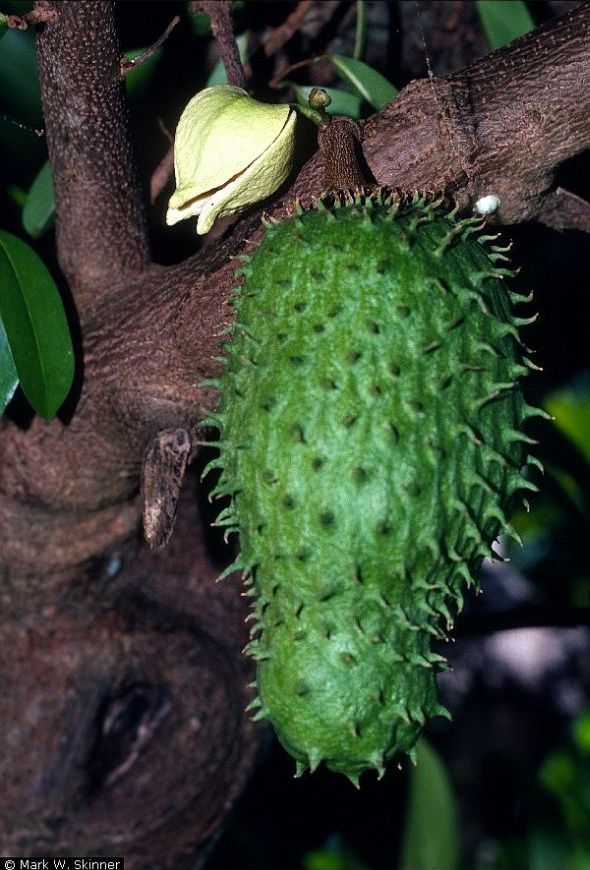
Plant Family: Belongs to the Annonaceae or Soursop family, which includes Sugar Apple (Annona squamosa), Custard Apple (A. reticulata) and Ylang Ylang (Cananga odorata).
Description: Small, quick growing tree, up to 6 m tall (20 ft); several trees in economic crops section near old Agriculture Division building; leaves oblong, shinny-green above, light green beneath and very fragrant, 8-15 cm long (3-6 in); flowers with 6 petals, small, pendent, greenish-yellow, up to about 4 cm long (1.5 in), produced on branches or directly on trunk; aggregate fruit large, generally ovoid, up to 25 cm long (10 in) and 17 cm across (6.5 in); always green and covered with green, soft, curved “prickles,†remnants of the pistils; has white, juicy pulp with scattered black or brown seeds and distinctively aromatic, pleasant flavor; main crop December to June, with some fruit most of the year.
Natural Habitat: Thrives in the drier coastal areas of the island, but will grow at somewhat higher elevations; propagated from seed and cuttings.
Origin and Distribution: Native to the West Indies and tropical America, but now commonly grown throughout the tropics generally.
Uses: Cultivated primarily for its fruit, which is used for making an excellent drink and delicious ice cream; leaf infusion makes a very pleasant tea; medicinally, used for a wide variety of ailments including: leaves used in baths to treat skin diseases, and pulverized in candle wax as a poultice for abscesses; leaf infusion used as hypnotic agent and sedative, and for treating diarrhea; Carib uses are numerous - fruit eaten to induce lactation in women; leaf infusion used for colds, fever and to induce labor; leaf infusions from mixture of Soursop and other leaves used to treat a retroverted uterus and diarrhea; root used in tea for gonorrhea; in Africa, bark used for dysentery and worms; reputedly, plant extracts said to have cancer-fighting properties.
References:
Robert A. DeFilipps. Useful Plants of the Commonwealth of Dominica, West Indies. Smithsonian Institution, Washington, D.C. 1998
H.F. Macmillan. Tropical Planting and Gardening. Macmillan, London 1956
C.D. Adams. Flowering Plants of Jamaica. University of the West Indies, Mona, Glasgow University Press 1972
Penelope N. Honeychurch. Caribbean Wild Plants and Their Uses. Macmillan, London, 1986
Watkins, Frederick Henry. Handbook of the Leeward Islands. West India Committee, London 1924
William C. Kennard and Harold F. Winters. Some Fruits and Nuts for the Tropics. USDA, Washington, DC 1960
Arlington A. James. Cabrits Plants and Their Uses. Forestry and Wildlife Division, Ministry of Agriculture, Dominica 1986
|

